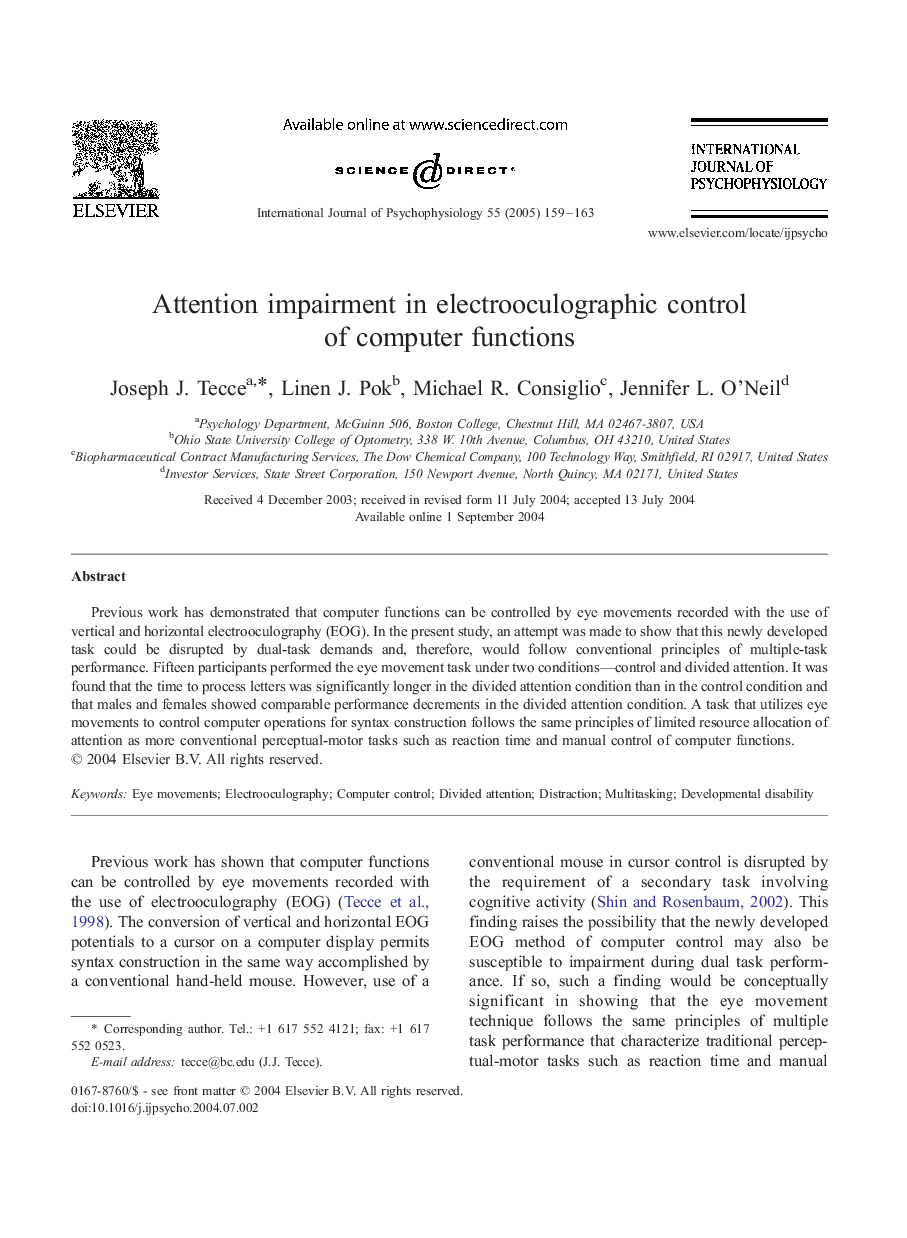| Article ID | Journal | Published Year | Pages | File Type |
|---|---|---|---|---|
| 9722694 | International Journal of Psychophysiology | 2005 | 5 Pages |
Abstract
Previous work has demonstrated that computer functions can be controlled by eye movements recorded with the use of vertical and horizontal electrooculography (EOG). In the present study, an attempt was made to show that this newly developed task could be disrupted by dual-task demands and, therefore, would follow conventional principles of multiple-task performance. Fifteen participants performed the eye movement task under two conditions-control and divided attention. It was found that the time to process letters was significantly longer in the divided attention condition than in the control condition and that males and females showed comparable performance decrements in the divided attention condition. A task that utilizes eye movements to control computer operations for syntax construction follows the same principles of limited resource allocation of attention as more conventional perceptual-motor tasks such as reaction time and manual control of computer functions.
Keywords
Related Topics
Life Sciences
Neuroscience
Behavioral Neuroscience
Authors
Joseph J. Tecce, Linen J. Pok, Michael R. Consiglio, Jennifer L. O'Neil,
